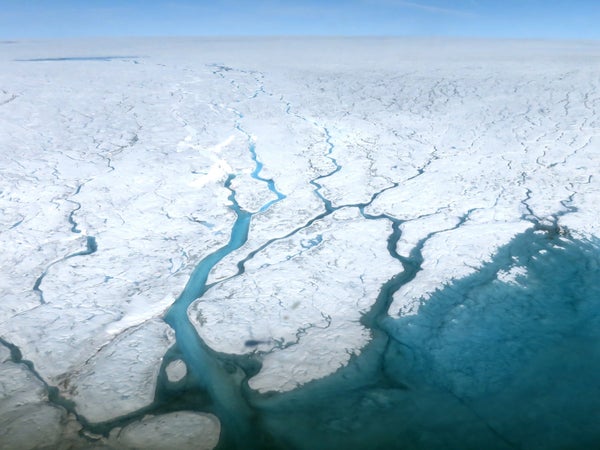New York City's sea level is likely to be most heavily influenced by ice melt in northeastern Greenland. Sydney may be strongly affected by shrinking glaciers on the Antarctic Peninsula and around the Amundsen Sea.
Ice loss from world's melting glaciers presents a major concern in the form of global sea-level rise—it's one of the most well-established facts about climate change. But where exactly those melting glaciers are located may make a big difference in what parts of the world they affect, and how.
New research, published this week in the journal Science Advances, provides one of the most detailed examinations yet of how coastal cities around the world will be affected by ice melt from glaciers in different places.
On supporting science journalism
If you're enjoying this article, consider supporting our award-winning journalism by subscribing. By purchasing a subscription you are helping to ensure the future of impactful stories about the discoveries and ideas shaping our world today.
As it turns out, the effects are hardly the same from one location to the next.
The analyses were conducted by researchers Eric Larour, Erik Ivins and Surendra Adhikari of NASA's Jet Propulsion Laboratory. And their method can be applied to any coastal city around the world, they say, providing local governments and coastal planners a major new tool to help prepare for the future in a warming world.
The research relies on a fundamental fact about the physics of planet Earth—that is, that sea levels don't rise at the same uniform rates all around the world.
People sometimes make the mistake of thinking about the oceans as though they were all contained in a giant bathtub—add a little water from the faucet at one end, and the water level rises evenly throughout the tub. But in reality, there are many other complex physical factors affecting the movement of seawater around the globe, according to Larour, the new study's lead author.
"The first one is just gravity," he noted. A fundamental law of physics dictates that matter is attracted to other matter, meaning large masses tend to draw other masses toward them. Large glaciers attract seawater to them under this principle. But as they melt, they lose mass, and the attraction becomes less, meaning the water begins to recede away and redistribute elsewhere around the world. As a result, large amounts of ice loss from any given location can actually cause sea levels to drop in nearby areas as the ocean water begins to flow away from the diminishing glacier.
Other factors affecting local sea levels can include changes in the ocean's currents as meltwater pours in, or changes in the topography at the bottom of the ocean as the heavy ice resting on top of it melts away. And even the Earth's rotation plays a significant role in the distribution of ocean water, Larour added.
These ideas are not new, and previous research has focused on determining the ways ice loss from specific glaciers might affect coastal areas elsewhere around the world. But in the new paper, the researchers have reversed this tactic for the first time.
They've developed a mathematical method that can be applied to any given coastal location around the world, indicating which glaciers may affect them the most—a strategy with much greater practical potential to help decisionmakers protect their communities. In addition to the Science Advances paper, the researchers have also applied their method to an online simulation tool that can be used to look at coastal cities all over the world.
"We are walking backward, reverse-engineering the change in mass that would be responsible for sea level at a coastal city," Larour said. "And this is city-centric, which is much better for a coastal planner."
The method can be used alongside ice sheet models, which make predictions about how glaciers will react to climate change decades or even centuries into the future. The researchers have already tested it with simulations covering 200 years of high-level global warming, focusing on four major glacier systems in Greenland.
New York, they found, is likely to be most affected by ice loss from the Petermann Glacier in northwest Greenland, as well as the Northeast Greenland Ice Stream, a large system of flowing ice that drains out into the ocean. But the Jakobshavn Glacier in the southwest, the Greenland glacier losing ice at the fastest rate, may have a much smaller effect.
That said, the analysis also suggests that the sea-level rise these glaciers cause in New York may be less than the global average, as other cities farther away may experience greater effects. And other cities closer to the Greenland ice sheet, such as Reykjavik, Iceland, may actually see their sea levels fall from the influence of those same glaciers.
There's still a great deal of uncertainty about how both the Greenland and Antarctic ice sheets will behave over long periods of future climate change, as scientists are still investigating the many physical processes that affect their melting and potential collapse. But as these models improve, scientists will become more confident about which glaciers pose the greatest threats to global sea levels as a whole—and policymakers can determine the extent to which their cities are at risk and plan accordingly for the long term.
Reprinted from Climatewire with permission from E&E News. E&E provides daily coverage of essential energy and environmental news at www.eenews.net.
